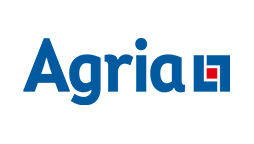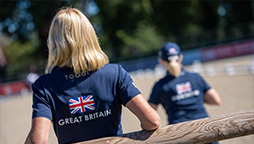Eventing
For the first time in a decade, since the 2015 iteration at Blair Castle, the Agria FEI Eventing European Championship returns to British soil. This will be the 37th running of the event, which reaches back to 1953 – it first took place at Badminton, when Great Britain won individual gold (Major Laurence Rook) and silver (Major Frank Weldon).
Britain has a storied history in this event, having won the team competition on 24 out of the 36 previous runnings, most recently last year at Haras du Pin. The individual title has also falled into British hands on 20 occasions – more than all other nations combined.
This year's competition sees 56 athletes representing 17 nations taking part, with nine of those contesting the team competition.
The venue
Blenheim Palace in Woodstock, Oxfordshire is a UNESCO World Heritage Site and the seat of the Dukes of Marlborough. It was built between 1705 and 1722, and named after the 1704 Battle of Blenheim, which was part of the War of Spanish Succession. It's the birthplace of Sir Winston Churchill, who's family made their home there for over 300 years.
The site has a rich eventing pedigree, having hosted an event there since 1990. It's become an important fixture in the British Eventing calendar, with its Capability Brown-landscaped parkland, Lion Bridge water crossing and undulating terrain providing the perfect setting for a cross-country track. Blenheim's eight- and nine-year-old class has become a key milestone in the career of many top-level event horses, including Laura Collett's London 52, who won the class in 2018 and will return to Blenheim this summer on the hunt for team and individual honours.
The event has a championship pedigree, having hosted the FEI Eventing European Championship 20 years ago, when Zara Phillips – who's father, Captain Mark Phillips will design this year's championship cross-country track – won individual gold and William Fox-Pitt picked up individual silver. Great Britain, to the delight of the assembled crowds, took team gold.
British squad
-
Laura Collett with Karen Bartlett, Keith Scott and her own London 52 and groom Tilly Hughes
-
Caroline Harris with Lucy Matthews, Fiona Olivier, Marie Anne Richardson and Heather Royle’s D. Day and groom Nellie Smith
-
Yasmin Ingham with Janette Chinn and The Sue Davies Fund’s Rehy DJ and groom Alison Bell
-
Piggy March with Jayne McGivern’s Halo and groom Hannah Chowen
-
Tom McEwen with James and Jo Lambert and Deirdre Johnston’s JL Dublin and groom Adam Short
-
Bubby Upton with the Five Time Syndicate and her own Its Cooley Time and groom Kirsty Campbell
View the full definite entries list
daily schedule
- Wednesday 17 September:
- First horse inspection (12:00 BST)
- Opening ceremony and Parade of Nations (15:30 BST)
- Thursday 18 September:
- Dressage day one – session one (10:30–12:00 BST)
- Dressage day one – session two (14:00–16:30 BST)
- Friday 19 September: Grand Prix B (team competition) for Grades 1, 2 and 3
- Dressage day two – session one (10:30–12:00 BST)
- Dressage day two – session two (14:00–16:30 BST)
- Saturday 20 September:
- Cross-country (11:00 BST)
- Sunday 21 September:
- Second horse inspection (08:00 BST)
- Showjumping – session one (11:00 BST)
- Showjumping – session two (14:00 BST)
- Medal ceremony (15:00)
Latest news
Stay up to date with everything that's happening at Blenheim here, or via our Facebook and Instagram feeds.
You can also stay up to date via British Eventing's Facebook and Instagram feeds.
Results and timings
All results and timings are available to view via Eventing Scores. The start lists will be updated after the first horse inspection takes place on Wednesday 17 September.
Competition Structure
Eventing is a three-phase competition that's often likened to a triathlon. It's run over a period of four days and tests a combination's athleticism, bravery and harmony. Teams are made up of three or four combinations, with the three highest scores counting towards the team medals, and horses and riders must complete the competition together as a pairing.
Horse inspections
All horses are examined on arrival and must pass a horse inspection by the ground jury and a veterinary delegate prior to the start of competition to ensure that they're fit to compete. All horses contesting the individual final must pass a second horse inspection on the morning of the rest day.
arena familiarisation
The day before competition starts, each nation takes part in an arena familiarisation session in the main arena, in order to help their horses become acclimated with the environment. The arena is set up exactly how it will be during competition, including all dressings and filming equipment. Nations will be allocated time slots for their familiarisation session, based on a draw process.
DRESSAGE (DAY ONE AND TWO)
All combinations complete a predetermined test of movements in front of three judges, set at CCI4* level. The judges award marks out of ten for each movement and, after combining the scores to give an overall percentage score, the score is then converted into penalty points (the higher the percentage, the lower the penalty score). For example, a percentage score of 70.00% becomes a penalty score of 30.00.
CROSS-COUNTRY (DAY THREE)
Competitors tackle a course of around 40 solid jumping efforts (including long and short options), which can include logs, ditches, water, drops and corners. The course is 5,710m in length and combinations will aim to travel at an average speed of 570 metres per minute. Penalties are incurred during this phase for a refusal, a run-out (at a fence) or for exceeding the time allowed of 10 min 1 sec, and these are added to the combination’s dressage score. Fall of horse or rider results in elimination. This year's cross-country course has been designed by Captain Mark Phillips.
SHOWJUMPING (DAY FOUR)
Following a second vet inspection to ensure that all horses are still fit to compete, combinations take on a short course of between 12 and 15 colourful fences. The course will be around 600m in length, with combinations aiming to travel at an average of 375 metres per minute. Penalties are added to their score for knocking down an obstacle, refusal at a fence or exceeding the optimum time. Riders can be eliminated for a second refusal or a fall. This year's jumping course has been designed by Paul Connor.
The individual winner is the combination with the lowest number of penalty points accrued across the competition. In the team event, the scores of the three best-placed riders are added together to calculate the overall result.
How to watch
Enjoy live coverage from the event, taking place at Blenheim Palace from 17–21 September, with commentary from Steven Wilde and Tina Cook on BBC iPlayer and the BBC Sport platforms.
Here’s when you can watch…
- Saturday 20 September 10:45–15:30 (cross-country)
- Sunday 21 September 10:50–12:10 (showjumping – session one)
- Sunday 21 September 13:50–15:00 (showjumping – session two)
Coverage will also be available on-demand for 30 days after the event. All times are subject to change.
Full coverage of all four days of competition, including the dressage phase, will be available on FEI.TV via subscription to ClipMyHorse.TV.
All the action will be available to stream live with English commentary on FEI.TV via a subscription to ClipMyHorse.TV. Click here for the full schedule.
Keep an eye on our social media feeds for the ride times of each of our British combinations.
Ticketing
Tickets are available to purchase through the online box office, with day or season passes available or you can come along for late-night shopping on Thursday or Friday. If you're planning to visit the event, further information is available here.
Hit the shops
Blenheim boasts a huge array of tradestands – enough to keep even the most dedicated shopoholic satisfied. Amongst them are a number of our member bodies, partners and suppliers. Here's where you'll find them...
- Agria – J60
- Centre Line – B205
- Equi-Trek – C428
- The British Horse Society – C478
- British Equestrian Trade Association – A107
- Pony Club – M910
- Riding for the Disabled Association (RDA) – B223
- RDA Shop n Drop – A121



